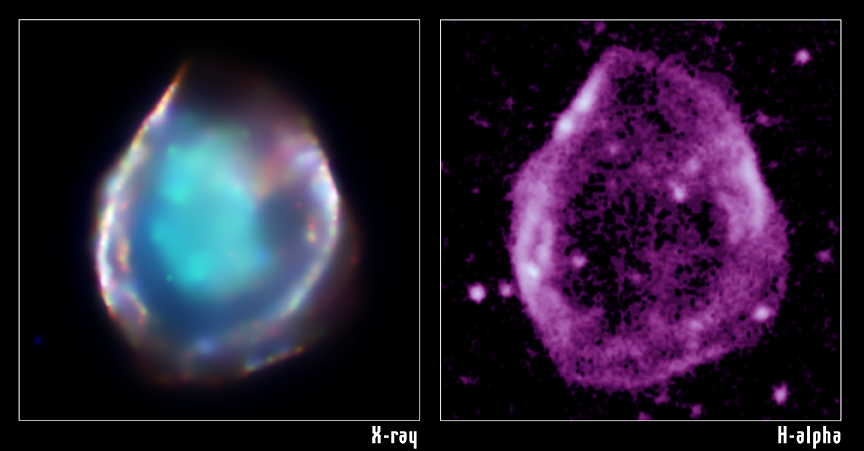
 Credit: X-ray: NASA/CXC/Rutgers/J.Hughes et al; Optical: Rutgers Fabry-Perot
Credit: X-ray: NASA/CXC/Rutgers/J.Hughes et al; Optical: Rutgers Fabry-Perot
What's Left of a Standard Candle
Astronomers measure distances by measuring brightness. If the intrinsic brightness of an object is known, its distance can be determined simply by measuring its apparent brightness. The trick is figuring out an object's intrinsic brightness, which is usually not known very precisely. This is one reason astronomers consider certain types of supernovae explosions, called Type Ia supernovae, so important. Astronomers believe that Type Ia supernovae all have the same intrinsic brightness, and so serve as "standard candles". Type Ia supernovae are believed to occur when compact objects called white dwarfs suddenly go above the so-called "Chandrasekhar Limit", a theoretical limit on how massive a white dwarf star can be before it suddenly collapses into a neutron star. The image above shows a new observation of the remains of a supernova called DEM L71. The image on the right shows the remnant in optical light. The image on the left shows the extremely hot X-ray emitting gas associated with the shocked material ejected during the explosion, as imaged by the Chandra X-ray observatory (named, by the way, for the astrophysicist who discovered the mass limit for white dwarfs). The Chandra image shows that hot gas fills the interior of the remnant produced by a "reverse shock" on the interior edge of the remnant. The X-ray and optical measurements confirm to astronomers that this remnant is indeed the remains of an exploded white dwarf.
Last Week *
HEA Dictionary * Archive
* Search HEAPOW
* Education
Each week the HEASARC
brings you new, exciting and beautiful images from X-ray and Gamma ray
astronomy. Check back each week and be sure to check out the HEAPOW archive!
Page Author: Dr. Michael F. Corcoran
Last modified March 23, 2003


